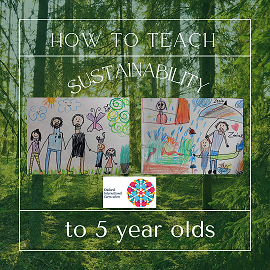
All of us know the importance of sustainability, and the things that we need to do – both big & small – to make the world a better place.
But how do you explain this to a small child? How do you talk about abstract concepts like preservation, conservation and pollution in a way that she understands them? And finally, how do we make sustainability a part of each and every child’s daily life?
We at the Sandbox Academy undertook a 12 week Project to bring out the meaning of Sustainability for our 5-7 year old learners . The project, as a part of the Oxford International Curriculum, was based on the approach of the IDEAS (Investigate, Define, Explore, Act) to Action Framework. The project used various methods to bring the concepts to life – like role plays, story telling, props, quizzes, games etc. Also the children were encouraged to think & share their thoughts through discussions as well as drawings.
Our first challenge was to change the abstract to the real, and convert the large to the small. So, we started with investigating the spaces and things within the house. The children were asked to talk about the spaces and things that they shared with others in the house like a bedroom or laptop.
This was followed by the concept of Responsibility. When we speak about shared spaces, who are the people sharing them, and who are the people who need to take care of them. The children spoke about how their parents took care of their home, and they themselves also had to keep their rooms clean. This concept was then extended to the playground, where they had to take care to keep their surroundings clean.
The next concept to be described was Interdependence – how people and things affect each other. The students were shown how pollination happens. This was used to show how bees help the flowers to become fruits, and how they got nectar from the flowers. Then the students talked about their own experiences with sharing things with friends.
Students then brought these concepts together to understand the term Commons, which are the resources that belong to an entire community. Starting from the home (belonging to the family), they moved to the surrounding areas and then finally to the natural resources like air and water.
This was followed by understanding the consequences of not taking care of the commons. They learnt about the actions that they can take in caring for the commons. Taking this further, they understood how if everyone agrees to do their duty to care for the commons then it benefits everyone.
And finally, the project ended with the students sharing their views about a healthy commons, how it makes everyone happy and how they can make it happen.
As the saying goes – “We don’t inherit the earth from our ancestors but we borrow it from our children ”. By teaching them the importance of sustainability from their early years, we are ensuring that we do our bit to make the world a better place – now & for the future.
